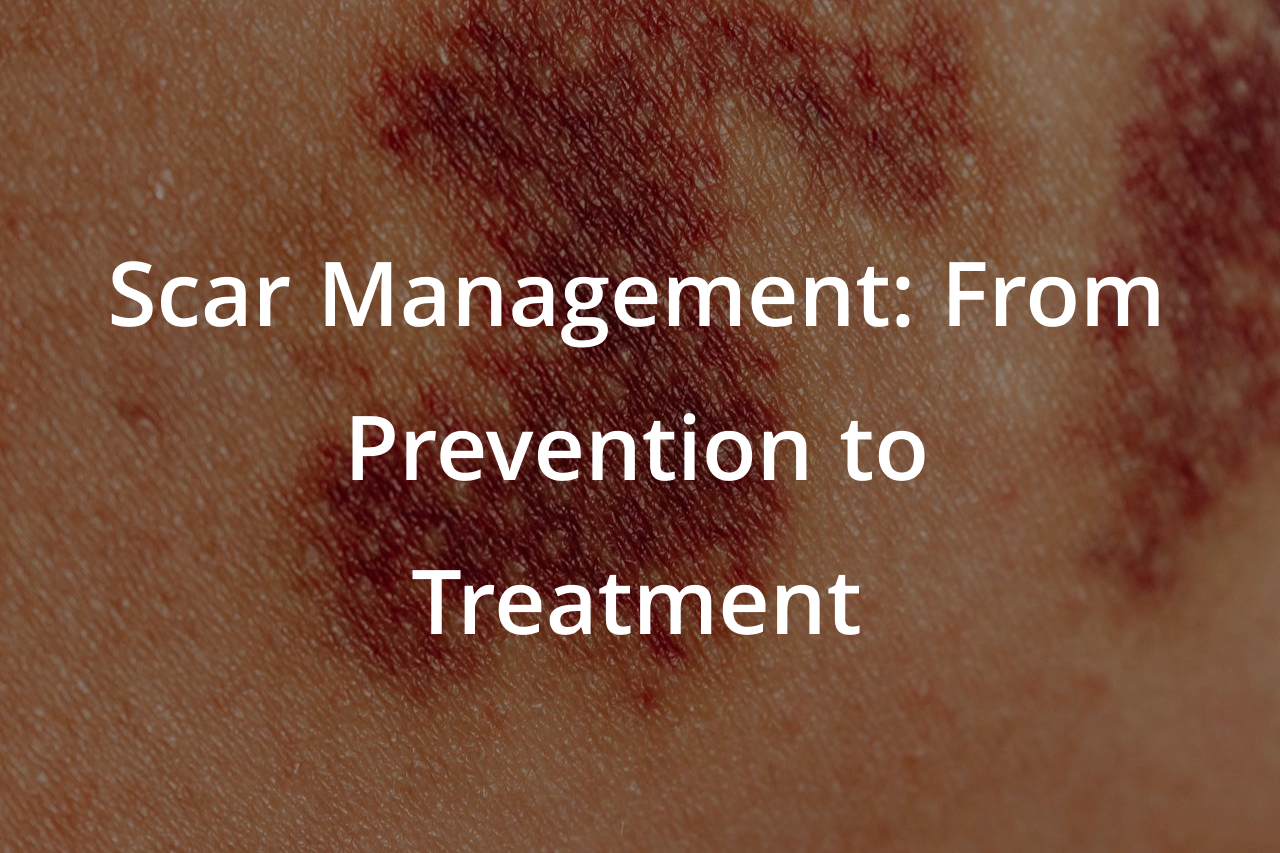Scarring is a natural part of the healing process, yet it can sometimes lead to significant cosmetic and functional issues. Effective scar management is crucial to minimizing these effects and promoting better outcomes, whether from surgery, injury, or burns. At The Wound Institute, we keep up with the latest advances and techniques in scar management, from initial prevention to long-term treatment strategies. This blog explores comprehensive approaches to managing scars effectively, ensuring patients can heal and regain confidence in their appearance.
Understanding Scarring
Scars form as part of the natural healing process when the dermal layer of the skin is damaged. The body forms new collagen fibers to mend the damage, creating a scar that may look and feel different from the surrounding tissue. Several factors influence scarring, including wound size and depth, the location of the injury, age, genetics, and skin color.
Prevention of Scars
Immediate Wound Care: Effective scar prevention starts with proper wound care:
- Clean and Protect: Keep the wound clean and moist. Petroleum jelly and an adhesive bandage can prevent dryness and reduce the chance of scab formation, which can intensify scarring.
- Avoid Infection: Preventing infection is crucial, as it can worsen scarring. Clean the wound regularly and watch for signs of infection, such as redness, swelling, or warmth.
Minimize Tension: Reduce tension around the wound site with secure but gentle bandaging. Tension can pull the edges of the skin apart, leading to larger, more noticeable scars.
Treatment of Existing Scars
Topical Treatments:
- Silicone Gels and Sheets: Silicone treatments are a first-line therapy for managing new and existing scars. They hydrate the scar and reduce the collagen build-up, making scars less noticeable.
- Corticosteroid Creams: These can help reduce inflammation and improve the appearance of keloid or hypertrophic scars.
Minimally Invasive Procedures:
- Injections: Steroid injections are commonly used to treat keloid and hypertrophic scars, reducing their size and relieving discomfort.
- Dermal Fillers: For atrophic scars, such as those from acne or chickenpox, dermal fillers can help raise the indentations to level them with surrounding skin.
Laser Therapy:
- Ablative Lasers: These remove layers of skin around the scar to make the scar less visible.
- Non-Ablative Lasers stimulate collagen production without damaging the surface skin, improving the scar’s color and texture.
Surgical Options:
- Scar Revision: This procedure involves removing or altering the scar to minimize its appearance. This is particularly useful for scars that have healed poorly or are in visible areas.
Lifestyle and Home Remedies
- Sun Protection: Exposure to the sun can darken scars and make them more noticeable. Protecting scars from the sun with clothing or high-SPF sunscreen is crucial, especially in the first year of healing.
- Massage and Exercise: Regular massage can help break down the dense bands of collagen that form in scars. For scars that impair movement, specific exercises can improve flexibility and reduce stiffness.
- Nutrition and Hydration: A healthy diet rich in vitamins C and E can promote wound healing and aid in the body’s collagen production. Staying hydrated is also vital for maintaining skin elasticity and aiding in scar minimization.
Conclusion
Scar management is a multifaceted discipline integrating preventative care, advanced therapeutic techniques, and comprehensive patient education. With the right approach, it is possible to significantly reduce the impact of scarring on both a physical and psychological level. At the Wound Institute, we are committed to providing patients with the latest in scar treatment technologies and methods, ensuring that healing does not end with wound closure but with the restoration of function and appearance as well.



